There were periods of riding the Harley-Davidson Fat Bob 114 that were swathes of pure, untrammelled joy. Gentle curves in suburban streets, meandering hilly roads, and entry ramps onto freeways were all places where I could wind on the throttle, feel the thrum, and smile — and never feel like my license was at stake.
That’s the secret sauce of Harley-Davidson — making everyday riding more fun. They’re not the only brand to do it, nor is a heavy cruiser the only way in which you can get a feeling of being excited to be out and about doing everyday things — but Harley does it well, anyway. And especially so with the Fat Bob 114, coded the FXFBS in Harley’s ever-evolving naming system.
Of course, it wasn’t all roses. There were bits of everyday riding on the Fat Bob where some element of the equation would make me wonder “What’s going on with this thing?” and then get me into an existential debate about whether it was a flaw or an intentional part of the experience. I admit I even enjoyed the debate, though, so I’m sharing it with you here.
If you’ve ever had your eye on a Harley cruiser, and if the Harley-Davidson Fat Bob has caught your eye (like it did mine), then you probably have wondered the same things I have, like:
- Why a Harley, Dana? C’mon, I thought you were the ‘Busa, Ducati, and BMW guy
- What makes the Harley-Davidson Fat Bob unique in the lineup? Isn’t it the same engine in a slightly different package?
- Is it a cruiser? Is it comfortable?
- Is the Fat Bob sporty? Do those upside-down forks and twin discs mean much?
- What alternatives are there out there?
Let’s dig in.
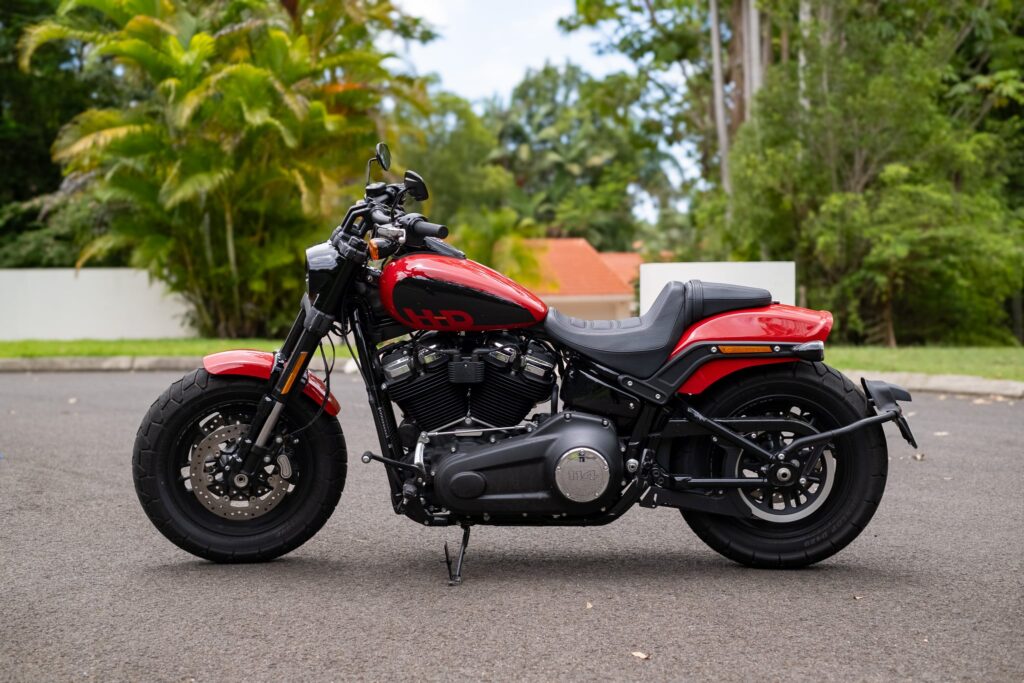
Are you obsessed with motorcycles?
Well, I am. That’s why I created this site — as an outlet. I love learning and sharing what others might find useful. If you like what you read here, and you’re a fraction as obsessed as I am, you might like to know when I’ve published more. (Check the latest for an idea of what you’ll see.)
Preamble: Why Harley-Davidsons? Cue the Clichés…
Some of this rag’s readers have said things to the effect of “I’m not interested in Harleys, but I’ll read about it if you write about it.” That’s as generous as I can expect from someone not into them, and I’ll try to do the sentiment justice.
So here’s a brief exposé of why I’m interested in Harley-Davidsons. The long and short of it is that I like going fast, but I’m trying to learn to enjoy the other aesthetic elements of riding, too. I have this theory that it’s possible to enjoy droning on a highway or riding at moderate speeds around suburban or country roads without feeling like I’m taxiing a fighter plane.
Harley-Davidsons are well-known for making old-style, simple, and cool-looking motorcycles. People (sportbike riders or other casual enthusiasts) write off Harley-Davidsons as being expensive, unsophisticated, and mired by a culture of white beards, old-fashioned machismo, and sometimes, crime. (Is the secret ingredient crime?)
I have the mixed privilege of not knowing anyone who rides a Harley-Davidson. So, on the one hand, I don’t have a ton of baggage about the brand and its riders. Instead, I get to start from zero and build up my own perception of what they’re all about. This is a challenge because deciding to learn about Harleys alone is like deciding to learn about the world by flicking randomly through Wikipedia.
Wander into a Harley showroom and you’ll be bedazzled by lots of shiny steel and chrome, huge sticker prices, and a confusing array of new terminology. Nevertheless, all you can really do is dive in, take test rides, and ask questions.
After tiptoe-ing around the Harley-Davidson world riding their eccentric stuff like the V-Rod and the Livewire, I decided to start giving air-cooled “Big Twin” Harleys a spin. I started with the Low Rider S (which I’ve had a crush on for years), but also recently had the joy of testing out the Fat Bob 114.
…Look, you might not think all Harleys look cool. I get it. Big tourers and baggers (baggers are basically tourers minus a few features) are an acquired taste. Appreciating a tourer or bagger is a little like admiring an apartment that prominently features ample storage space. So those are not the best intro.
But that’s where bikes like the Fat Bob come in. Even if you don’t want to ride a heavy, feet-forward cruiser, it’s hard to disagree that someone might think it’s a good-looking machine in a more elemental way.
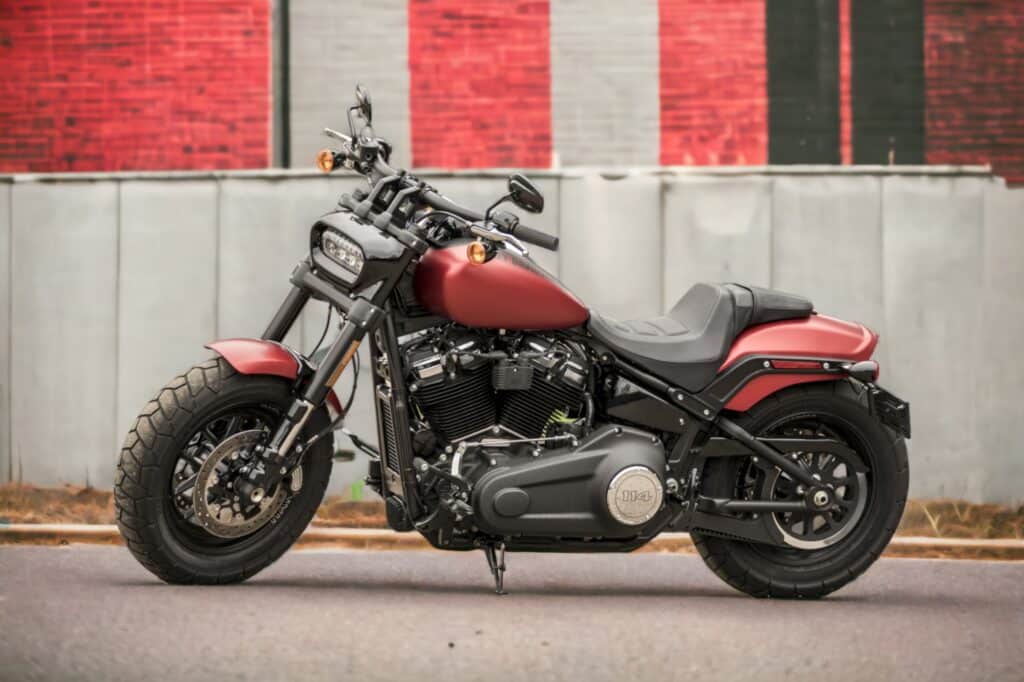
The attractiveness of a simple cruiser like the Fat Bob — or others in its class, like the Low Rider, Softail Slim, and a few others — is that there’s so little to it conceptually. There’s a double down-tube (a.k.a. “cradle”) frame in which the engine is suspended. It’s heavy, but it works. There’s the engine, the centrepiece. Then there’s a tank, a belt drive, some simple suspension, and little else. It’s easy to “get” what’s going on with this bike by just looking at it.
There aren’t many other simple bikes around, and most of them aren’t the top end of different brands’ model ranges. BMW makes a few heritage models, like the R nineT, R 18, and the new R 12 line. They all use air/oil-cooled engines and are also easy to “get”. But BMW’s premium bikes are liquid-cooled, high-power, multi-cylinder machines.
Similarly, most of Moto Guzzi’s lineup is very simple, with air-cooled engines and shaft drives, but Moto Guzzi’s premium bikes are liquid-cooled. And Ducati still makes its Scramblers with older tech, but is more known for its high-power V4s.
Maybe the biggest pretender to Harley-Davidson’s throne is Royal Enfield, a company that only just released its first liquid-cooled bike (the new Himalayan). There’s a brand that makes very attractive and dead simple motorcycles, most of which are air-cooled or air/oil-cooled, and they’re cheap, to boot. If RE starts making some burlier, bigger-cylinder bikes, the market will change dramatically.
The vast majority of motorcycle makers (historic brands like Harley-Davidson included) are adding technology to their machines. I don’t just mean liquid cooling, which even Harley-Davidson has used on some of its big twins (ok, “partial” liquid cooling!) since the Twin Cam engine. Manufacturers seem to be constantly adding ride aids (like cornering ABS), ride tech (like power modes), adjustable everything, colour digital displays, and even super advanced stuff like active suspension, radars, and who knows what else next.
If you want to keep all that extra stuff to a minimum, Harley-Davidson remains one of your best ports of call. For me, one of the acid tests of whether I buy a bike is if I like the instrument cluster. Very few colour digital displays do it for me. I know their utility (because I unironically will promptly strap a Quad Lock and my phone to the same bike), and admit that some look good, but I just like dials — at least one. And the more, the better.

I don’t like the glass cockpit of modern cars, and don’t like how it’s beginning to encumber the motorcycling experience. It’s bad enough that my other half pokes fun at me for using an Android phone; I don’t need to drive a glorified version of the same thing.
And the simplicity also extends to maintenance, by the way. One of the nice things about Big Twin Harleys (including Evo Sportsters, too), is that aside from when things go wrong (and they might), there’s little to do. You change the fluids and monitor the engine for leaks. But Harleys mostly have belt drives, which are much lower maintenance than chain drives, and also have self-adjusting hydraulic lifters, which means no scheduled valve service intervals. (This includes the high-power Rev Max motor in the Pan America and the Sportster S, by the way.)
Yes, you still might get eventual valve noise or other internal engine trouble, or the same things that happen on every other motorcycle like loose bolts, rusted parts, leaks, and so on. People have strong opinions on Harley-Davidson’s reliability, but there’s a lot of emotion and bias in the assessment. (See here for more of a discussion on the most reliable motorcycle brands.)
So that’s why some people consider Harleys, in a nutshell — simplicity, ease of ownership, and trying to enjoy going slowly. I know the caveats — they’re heavy and not high-powered. And they’re expensive, both to buy and to customise. But I’m curious, anyway.
Oh, also, they’re really nice to look at. I didn’t always think so!
But getting started in Harleys is hard. I’ve had to figure it out for myself, so I’ll help other noobs along, too.
About the Fab Bob 114 (FXFBS) and its Place in the World
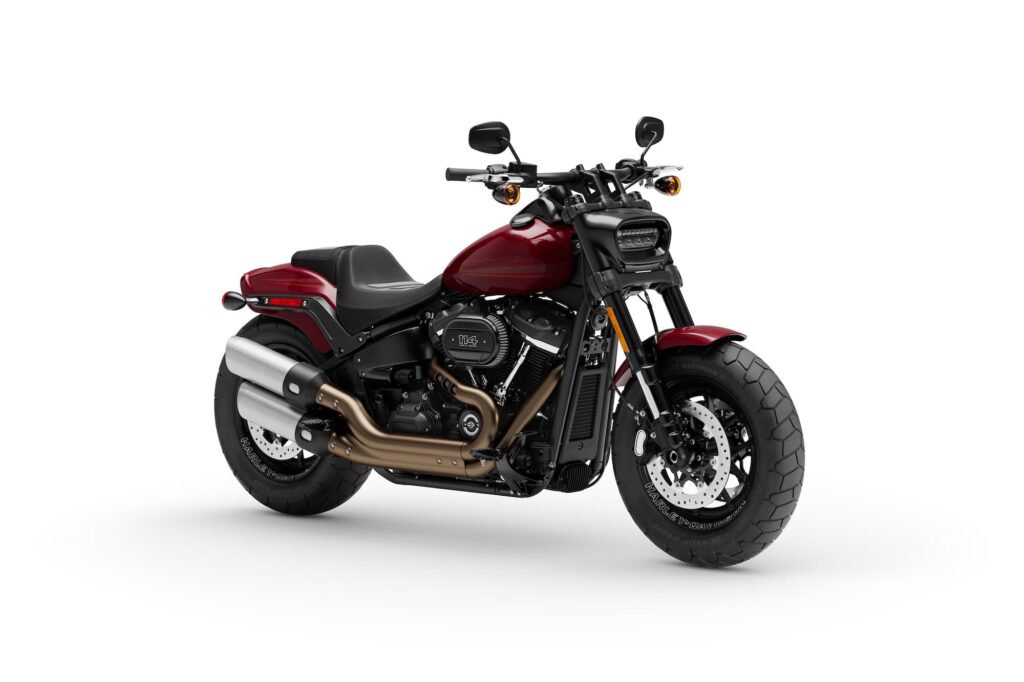
Let’s talk specifically about this bike, the Harley-Davidson Fat Bob 114, and how it fits in with the massive Harley world.
Harley riders often talk about their bike by describing one or more of three things: the bike type, the engine, the chassis, the model line, or an obscure acronym that everyone else is supposed to know.
Let’s talk about these three elements, briefly, as they pertain to the Fat Bob 114 or FXFBS. This is a cruiser based on the Milwaukee-Eight 114 motor in the new Softail chassis, with forward controls, twin disc brakes and an inverted fork.
But what does all that mean? Let’s look at it one by one.
The fact that it’s a cruiser is to distinguish it from a tourer (e.g. the Road King or ubiquitous Street/Road Glide). Cruisers are less useful in general than their more fully-equipped brethren. But these days, they all share the same basic engine with only minor internal changes.
Now, the engine. The Milwaukee-Eight is Harley Davidson’s most recent — and, in fact, last remaining — air/oil-cooled “Big Twin” motor. In the past, there was the Twin Cam, which was phased out after the 2017 model year, and the Evolution engine which we last saw in the 2020 Sportster (but which also used to be Harley’s premium Big Twin engine.)
The Milwaukee-Eight is so named because it has eight valves — four per cylinder. This is a first for Harley-Davidson’s big air-cooled twins. It has just one camshaft (down from the Twin Cam’s two) and drives the valves via pushrods and hydraulic actuators — the last part of which means they don’t need any scheduled valve clearance adjustments.
By the way, I mostly say air/oil-cooled, but sometimes say air-cooled for simplicity. See more about air-cooled engines here.
Harley-Davidson introduced the Milwaukee-Eight in 107 and 114 cubic inch formats. They also are making bigger ones, like the 117 and even 121 with VVT in the CVO models, not to mention the bigger “crate engines”.
Of course, each engine is bigger and better. But all the Milwaukee-Eight engines are feisty, torquey, and fun, while also being quite smooth for a Harley motor.
Next, the chassis. The Fat Bob has (since 2018) been in a Softail chassis. Softail means “It’s not a hard tail, but it looks like one,” because the shock is hidden under the rear wheel arch.
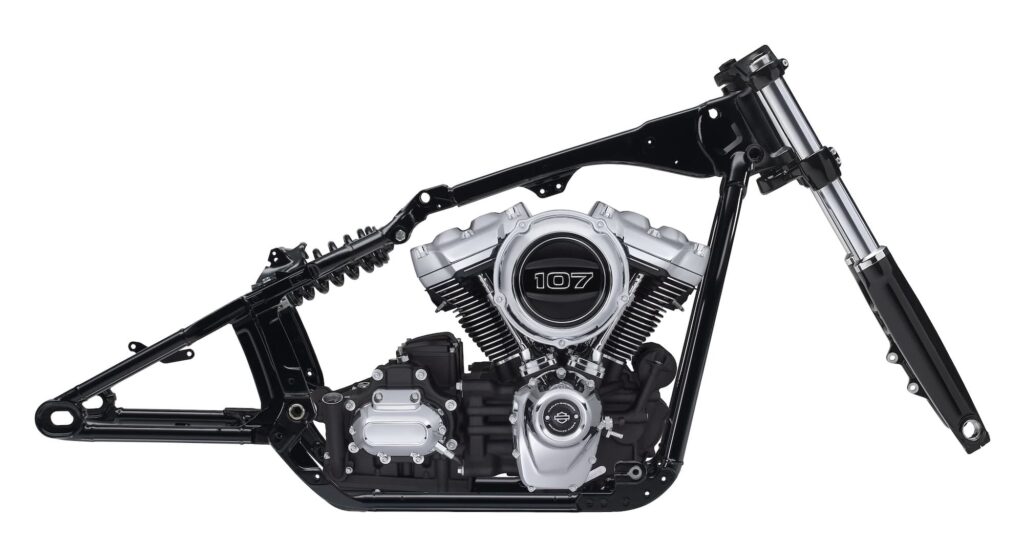
Until the 2017 model year, the Fat Bob used to be on the Dyna platform, which had twin rear shocks. Dynas are now iconic bikes — some people consider the Dyna + Twin Cam combo to be one of Harley’s greatest recent eras.
See more about the history and evolution of the Harley-Davidson Fat Bob models here.
When Harley-Davidson abandoned the Dyna line and merged those models into the Softail line, many Harley riders mourned. But they also agree that the Softail chassis, being lighter and more rigid, handles much better. (Despite this, Dyna prices are increasing slightly, or at least holding steady.)
Similarly, the Milwaukee-Eight engine has less bark than the Twin Cam. It’s smoother, too, which is a pro to some and a con to others. But it’s objectively more powerful in base trim.
Finally, consider the model designation, FXFBS. This is actually the easiest bit! In FXFBS, the F refers to a “Big Twin” model, the X references the sportier ones (including the Breakout, Street Bob, and Low Rider) which have smaller, sportier forks, FB stands for Fat Bob, and the S is the “Special” model — with the 114 engine, rather than the 107.
Harley-Davidson has mixed up its model naming system over the years, by the way. Don’t get too comfy. (E.g. the previous gen was FXDF — D stood for Dyna, the chassis, and F stood for Fat Bob.)
Here are the core specs of the Fat Bob 114 I rode.
| Part | Spec | Notes |
|---|---|---|
| Engine capacity | 114 c.i. (1868 cc) | Big! Always getting bigger |
| Engine configuration | Air/oil-cooled 45-degree V-twin, pushrod overhead valves, with hydraulic self-adjusting lifters, 8 valves | Mostly traditional Harley “Big Twin” |
| Bore / stroke (mm) | 102 x 114 mm | Undersquare |
| Compression ratio | 10.5:1 | Quite low — typical of air-cooled bikes |
| Peak torque (Nm / ft-lb) @ rpm | 160 Nm / 118 lb-ft @ 3500 rpm | |
| Front suspension | 43mm inverted fork | Sporty! (But not adjustable) |
| Rear suspension | Single coil-over monoshock, 56 mm stroke | “Softail” |
| Front brakes | 2 x 300 mm discs, 4-piston fixed front calipers | Quite mid-spec really |
| Final drive | Belt | |
| Wet weight | 306 kg / 676 lb | Heavy! |
| Front tyre size | 150/80-16 | This is the “Fat” part |
| Rear tyre size | 180/70-16 | |
| Ride aids / electronics | ABS, Cruise control | Not even traction control… |
You can’t ride a spec sheet, which is why I took the liberty of riding the actual motorcycle.
Riding the Fat Bob 114: Unexpected Joy in Everyday Riding
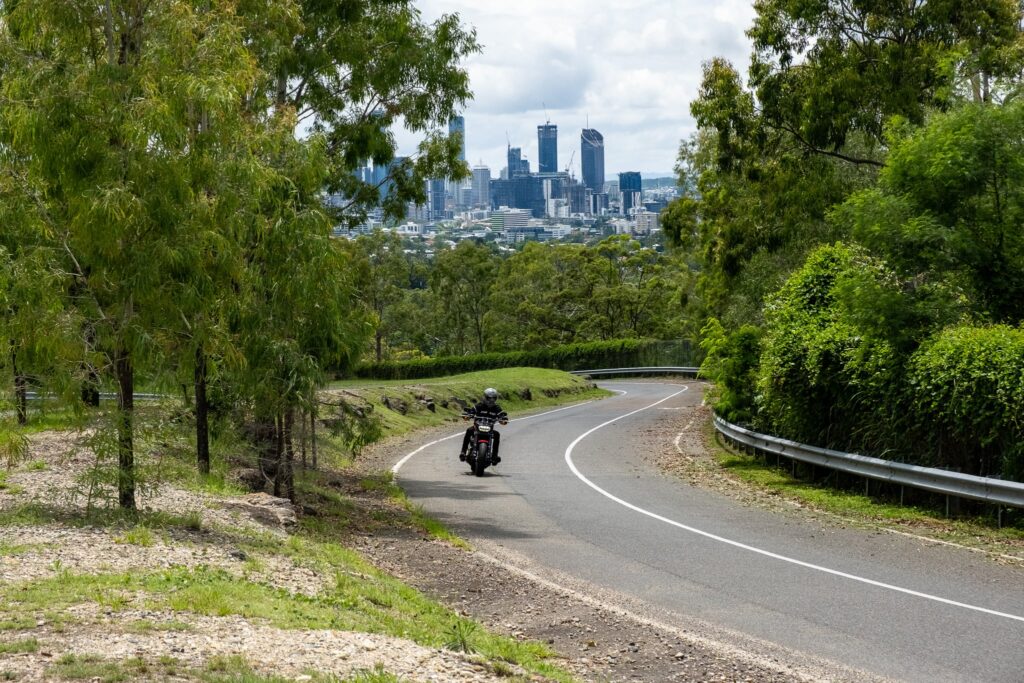
Bias is the enemy of objectivity. But to ride a Harley-Davidson without at least a semi-formed preconceived notion of what you’re going to expect is more difficult than with any other bike. Everyone has an opinion on Harleys.
I wasn’t too different. I had heard it all. I had watched YouTube videos of sport bike riders trying out Harleys, some falling in love and some not. I had listened to podcasts talking about their pros and cons, and I had read comments and from people saying they’d either never go back to a Harley, or never go back to another bike.
But I tried to shelve all that before my time with the Harley-Davidson Fat Bob 114. I wanted to figure this out for myself. It’s me riding, after all. I swung a leg over it with trepidation and set off trying to make up my own mind.
I won’t say I fell in love, nor that I “saw the light”. But the Fat Bob was the first Harley that made me think: I get it, now. I get why people like these.
A few things hit me right away, like the fact that it was more comfortable than I was expecting, or that it wasn’t as difficult to balance as I thought. But it took a few days before it all fell into place. I was riding at night, on the way to the gym in the light summer rain, the bright LED headlight illuminating a suburban backroad surprisingly well, when I suddenly caught myself thinking: This is really wonderful.
That thought snuck up on me over my time with the Fat Bob. This is the challenge of test rides — it’s hard to do anything in 30 minutes other than assess a bike in a purely technical sense, and maybe see if some aspect of is obviously amazing or terrible. But many motorcycles with richer experiences take weeks and hundreds of miles or kilometres to leave an impression.
Of course, my experience of joy was peppered with occasional notes of confusion about whether I was failing to understand the experience, or whether maybe I just didn’t know how to ride a bike of this format. I didn’t really enjoy the feeling of the big front tyre on bumps and grooves — it moved over them in an unpredictable way. The bike felt a little too wide to comfortably lane split, and I had to re-learn how to steer without pressure on the bars and footpegs.
But the magic of bikes crafted to give you a feeling rather than to be “good” in any unqualified way is that you are tempted to forgive them for their foibles.
Because why else, if not to engineer a feeling, would you put an unnecessarily large engine in a heavy chassis with a wide front tyre? None of that is to save weight. Nor is it to make it “flickable,” that odiously vague word lazily thrown about to describe everything from superbikes to Groms.
Because of my past experiences and slavish internet browsing, I had certain preconceptions about what I was going to experience on the Fat Bob. Surely it couldn’t be too different from the Low Rider with the same 114 engine, or the V-Rod, which shared a riding position? Was it going to be like some fusion of the two?
No, it wasn’t. The Fat Bob is very much its own thing.
The Approach
My ride experience on any motorcycle starts with a walk-up. This is what I call the “approach” — it’s the experience of walking up to a bike and soaking in its visuals, letting your mind wander. The visual approach is important with bikes, cars, houses, and food. Probably other things (or people). And what a walk-up this red Fat Bob gives!
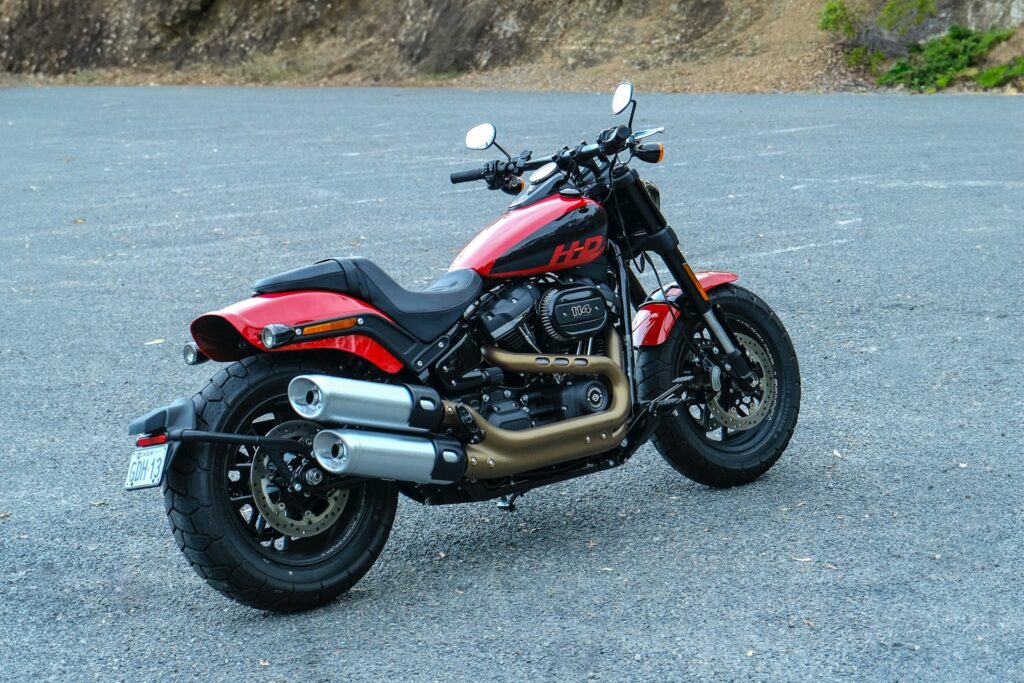
The Fat Bob is really a bike that draws in the eye. Not just mine — I got thumbs-ups from strangers, too. I don’t know what they saw because to me, it’s not obviously a Harley; it doesn’t scream anything but “cool-looking red bike”. Maybe they liked my helmet. I don’t know! But yeah, the Fat Bob looks sweet from every angle.
But looks aside, it was sitting on the Fat Bob that really shocked me.
I always thought that the Fat Bob looked larger in photos. I imagined my legs would be stretched out in front of me. Instead, they were at a pretty comfortable right angle (I’m 5’11 1/2 or 182 cm, but please don’t use that to steal my identity. Also, my mother’s maiden name is Beatriz, I was born on the peak of Everest, etc.). For me, the handlebar was exactly the width and height I wanted it to be. And the seat embraced me in a way that I wished more seats would. It wasn’t aftermarket, either.
In short, the Fat Bob was one of the most comfortable bikes I’ve ever sat on — including other Harley-Davidsons.
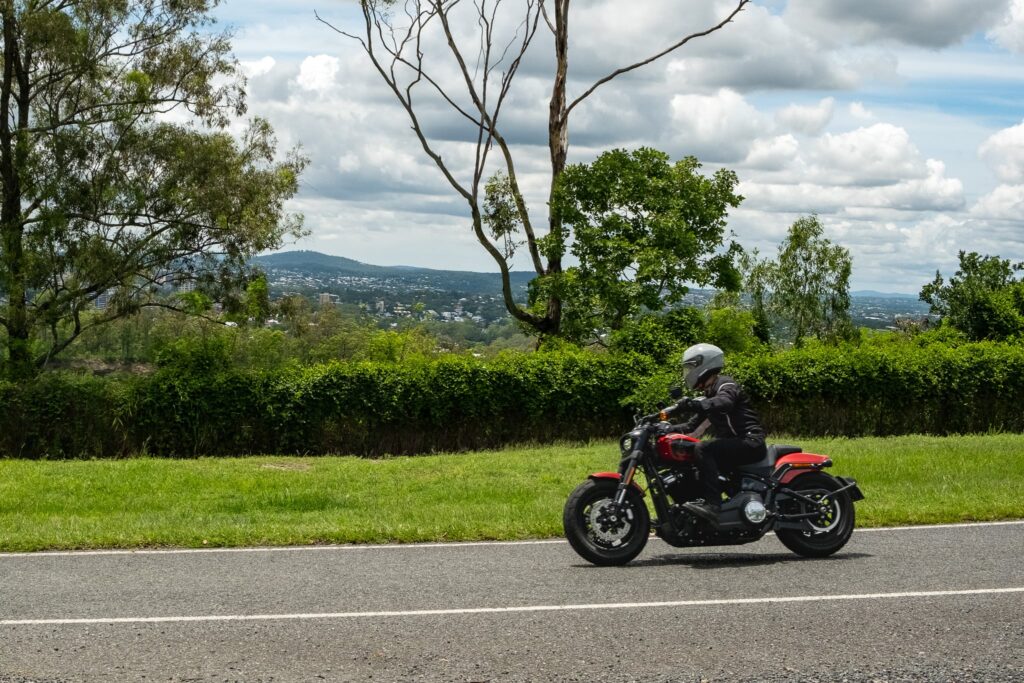
The Ride
Taking off, I quickly felt at home on the Fat Bob in a way I hadn’t felt on other cruisers. The controls may be “forward”, but they’re comfortable and natural feeling. Yes, a few times I did step on the exhaust, thinking that was the footrest. But it never felt alien to keep the balls of my feet on the pegs.
I’ve felt ill at ease on some other cruisers. Sometimes, the pegs are so far forward that pushing on the foot brake creates an unnatural bend in my ankle. Sometimes the bars are way too high, usually a product of aftermarket ape hangers (I don’t like the control they take away from me, but I know they look cool).
Let’s start with the engine. I had ridden the Milwaukee-Eight before, but only on a mildly worked-over bike with what Harley riders call “Stage 1” — exhaust, intake, and a tune. (“Stage 2” is a performance camshaft and second tune.)
The Stage 1 Harley I rode (a Low Rider S with the same 114 motor) had an absolutely booming set of Vance & Hines exhausts that reduced the neighbourhood to rubble. The person who lent it to me said that it was a moderate exhaust — still legal, at least in California where I rode it. I don’t think it’d pass muster in most of the world.
Anyway, I can’t tell you whether it was the noise or the tune, but that Stage 1 Milwaukee Eight was raucous. It really had oomph. I loved twisting the throttle on it, as long as my ears could bear it.
The muted exhaust of the stock Fat Bob is quite different. At idle, it’s whisper quiet. There’s no “potato potato”, but rather a “chortle chortle”. At any speed over 40 mph / 60 km/h at moderate throttle, I could mostly only feel it, and generally just heard the wind.
While its sound is uninspiring at idle, the Milwaukee Eight with a stock exhaust does wake up with heavy throttle at very low revs. That’s when you get that “blat!” that many associate with Harleys. It comes through despite the stock exhaust. And it feels great, too!
If you buy a second-hand Harley Fat Bob, you’re almost guaranteed to find one with a slash-cut exhaust, maybe from Vance & Hines or Screamin’ Eagle. There are loads of exhausts on the market. I’m not a fan of the most obscene exhausts, but it could definitely sound a little throatier. Although preferably not hotter. Even through riding pants, the high side exhaust gets hot.
Much ballyhoo is made of Harley engines’ ability to punch you with torque from down low, and the Milwaukee-Eight doesn’t disappoint. Before I started riding any low-revving cruisers, I was worried I’d hate short shifting, and regularly hit the rev limiter like I do on most bikes I ride (at least in first gear… sometimes second). But the Harley lets you know that it’s time to shift and it’s never upsetting. It just does what it says on the box.
The torque isn’t hard to manage, either. I did have a few unintentional wheelspins when taking off on paint strips in the wet, but I didn’t mind too much (as long as things don’t start going sideways into other cars, it’s all kosher).
The Fat Bob’s engine/exhaust combo strikes an odd balance between vibrations and smoothness. I basically wouldn’t call it either smooth or vibey, a kind of “neither Arthur nor Martha” situation, if you’ll allow my Australianism. The motor has vibes all through the rev range, but they’re intentional and yet also intentionally muted; Harley-Davidson has given the Milwaukee-Eight engine dual counterbalancers in all Softail models. As Harley engines go, this one’s actually very smooth. If you’re new to Harleys, you won’t be put off by vibes.
The vexing thing is that everyone talks about the joy of riding a Harley because of the vibes of the big twin. They’re there, sure. But they’re not there in abundance. I’ve had similar vibes from other V-twins with half the cylinder capacity.
The Fat Bob / Milwaukee-Eight gearbox is clunky but a good kind of predictable clunky. I never had problems with the throw or engagement. It never missed a gear. I did have trouble finding neutral after a ride, though, nearly every time. Hello? Neutral? Are you in there somewhere? Forget it, I’ll park it in first, and try to remember that for the next time I start…
Trouble finding neutral is not a universal issue, and it’s possible that a different kind of transmission oil might have allayed the problem. (This thread on hdforums explores the topic.)
While the Fat Bob doesn’t come with much in the way of tech, it does come with cruise control as an option.
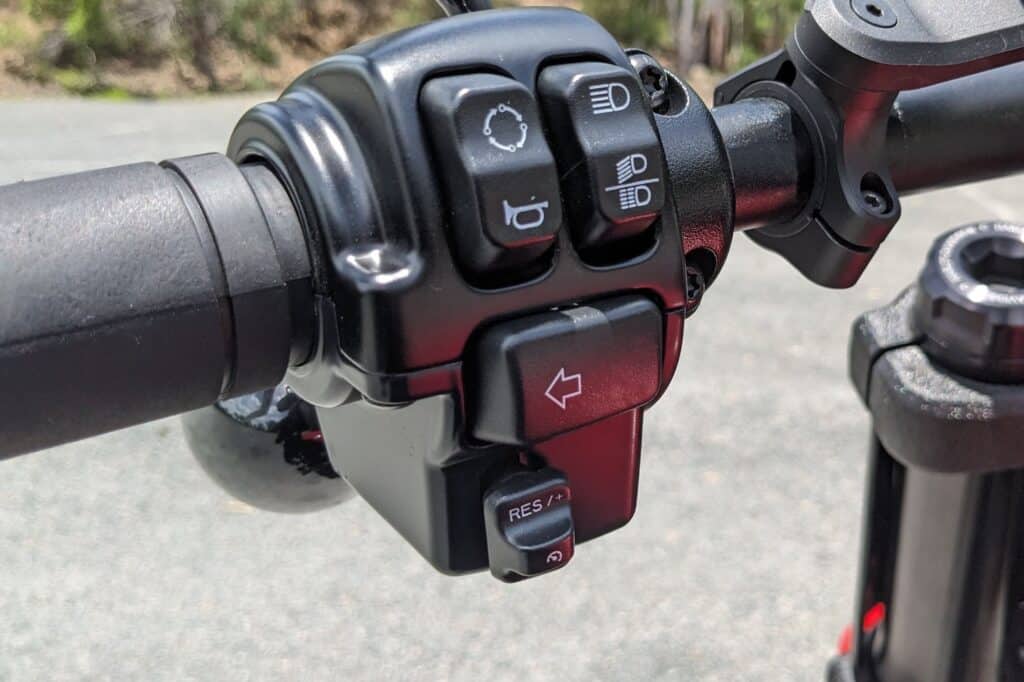
Cruise control isn’t for everyone. Some people consider it a liability. I like it — or at least a mechanical throttle rest — because a compressed nerve in my forearm means my right hand’s fingers go numb (my left hand is fine). This becomes a more acute problem when you have to use the Harley-style paddle shifters for the turn signals!
Where I most enjoyed the Fat Bob was in everyday cruising. It makes riding around for chores fun. Even 60 km/h (40 mph) roads were a blast because I could sweep through the curves and enjoy squirts of low-rpm torque. If I was in too high a gear… no matter, I’d just gas it and hear that big V-twin burp as it gave me what I wanted.
Is the Fat Bob “Sporty”?
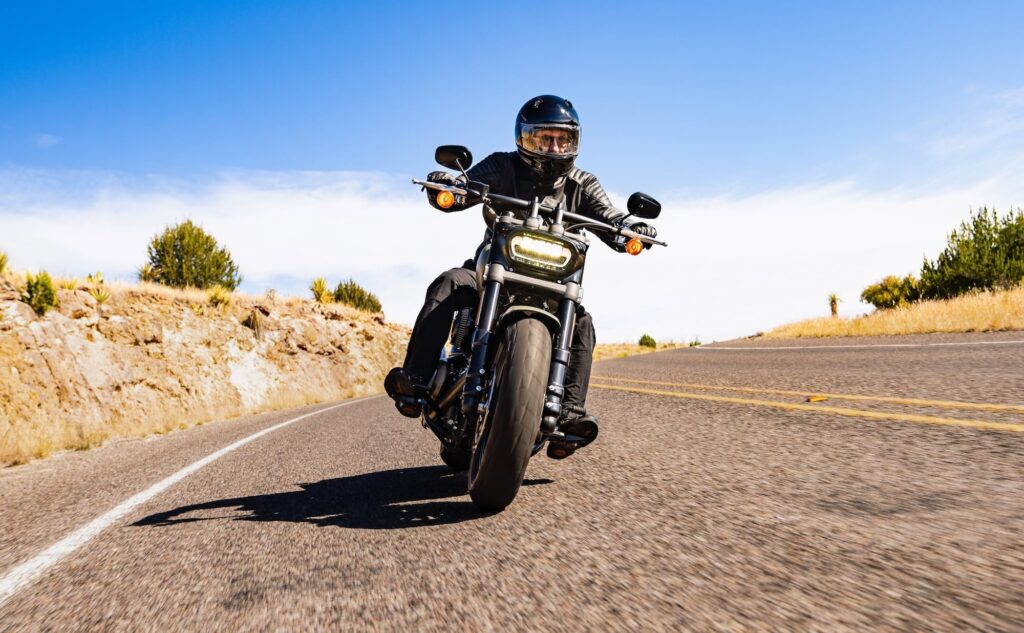
Ask Harley people and they’ll describe a subset of Harley-Davidson cruisers, including the Fat Bob, Low Rider, and a few others — as “sporty”. They’ll call them lightweight, easy to manage, and all kinds of things.
You can see why they’d use that language. The Fat Bob is pretty compact for a Harley. It’s not small, but it’s smaller than most things you’ll see in the Harley-Davidson showroom. It has features you’d expect on a mid-range sport bike, like inverted, non-adjustable forks, and twin disc brakes.
When talking about whether it’s “sporty”, it’s 100% important to know where you’re coming from. Next to a Street Glide or a Road King, the Fat Bob is definitely sportier.
But don’t get too carried away. The Fat Bob has basically the same spec of suspension as a mid-range street bike. And even mid-range bikes often have radially mounted calipers that would crush the Fat Bob fixed calipers, and that’s before you factor in the fact that the Fat Bob is 50% heavier.
It’s not to say that the suspension or braking is bad. It’s actually perfectly matched for the kind of riding you’d do on the Fat Bob. It’s always comfortable and always has good brake feel. My lack of comfort is more due to the absence of a windscreen or super plush seat, and not to do with the suspension.
It does take a little more active intention and comfort levels with weight to corner on the Fat Bob, just as it does on any big cruiser. On the one hand, that’s part of the joy. Motorcycles that make it too easy are the ones most at risk of being cast aside as having no “soul”. But on the other hand, cornering didn’t come as easily or as quickly as I hoped.
While I know the Fat Bob is a cruiser, while riding it I’m always aware that it’s a “performance” cruiser. I want my experience to live up to that promise. So I find myself caught between that idea and the reality of a 300 kg motorcycle with a fat front tire.
So as much as I like the riding position, I know that it’d take more experience to get the full gamut of performance out of the Fat Bob. In the meantime, I have to temper my expectations of sportiness.
Sport bikes or even sport nakeds make handling easy. They’re super light, to start with. You always have some pressure on the bars and pegs, so counter-steering and shifting weight are intuitive. There are bikes, like the Triumph Street Triple RS that I rode recently (188 kg wet vs 308 of the Fat Bob), that carve corners like a hot knife through butter.
On the Fat Bob, I’m so comfortably positioned that I have to make a concerted effort to move my body around for corners. This, coupled with the difficulty of leaning a heavy bike with a fat front tyre, means I just have to take corners more slowly than I usually like. On the occasions that I’ve gone into a corner too hot, I’d push the bar to lean more, and briefly think “Argh!” as I realised I had to push even harder — or back off.
I just haven’t had confidence cornering the Fat Bob as aggressively as I would have liked. I’ve warmed up to it over time. I know I could push it further, but I also don’t like pushing something that costs this much, weighs this much, and occasionally alarms me in the way it responds to steering.
The lack of confidence does slow me down. But this is the conundrum: I want to ride slowly because I want to; because I enjoy the feeling — not because I’m behind held back. Yes, part of this is me, my psychology, and my experience.
I know very well that “it’s the rider, not the bike”, and I just wonder how much experience it takes for people to scrape their big Harleys through every corner with aplomb. Much more than I have, so far! I’d like to get there, but I’m not sure I could afford the hard lessons learned by crashing…
Aside from riding, weight always comes and bites me in the behind in the most predictable of ways: Pushing the bike around. The Fat Bob is so heavy that even on a flat surface (especially with a gravel driveway), it’s cumbersome to move. I’m not weak, either (last I checked, I could still pick 160 kg / 350 lbs off the ground for reps) I nearly always would use the engine. If I ever become stuck facing the wrong way on a downhill one-way street with a dead end, like I once did on a Triumph Bonneville T120 (also a huge drama), I’d be up the creek.
Bugbears and Caveats
I had some little issues with the Fat Bob that mean it’d be a challenge to live with as my only bike in stock trim. Luckily, there’s an ample aftermarket!
Firstly, the instruments. The FXFBS has a tank-mounted gauge, Harley-style paddle turn signal switches, and self-cancelling indicators.
OK, I don’t mind the turn signal system. The buttons are nice, and I am OK with leaving cancelling to the magic of the computer.
And while I understand the heritage and style reasons for the tank-mounted gauge, I really find it hard to use. I don’t need to look at the tachometer on a cruiser, even though it’s cool (and analogue, my favourite!). I can avoid looking at the speedometer by ignoring the speed at which I’m going (never that fast on a Harley without a fairing, anyway).
But sometimes, I’d change lanes, and tap the turn signal button. Then I’d change lanes again, and wonder… Did it auto-cancel already? Should I tap the turn signal button again, to change lanes again? Or does that cancel it? I’d have to look down. And looking down while changing lanes at high speed on a highway isn’t fun.
One way out of this would be to not use turn signals at all. I don’t want to do that, but at least now I understand why other people don’t!
A solution to this would be to lightly modify the front turn signal lamps so I could see when they’re flashing even in broad daylight.
Secondly, wind. Hardly a unique problem, but one that all naked bikes — including the Fat Bob — share. On this bike, any speed above about 60 mph / 100 km/h reminds me that I do need at least a little shield to stop the buffeting. Harley offers two shields for the Fat Bob in various heights which look pretty good, but cost Harley-Davidson money.
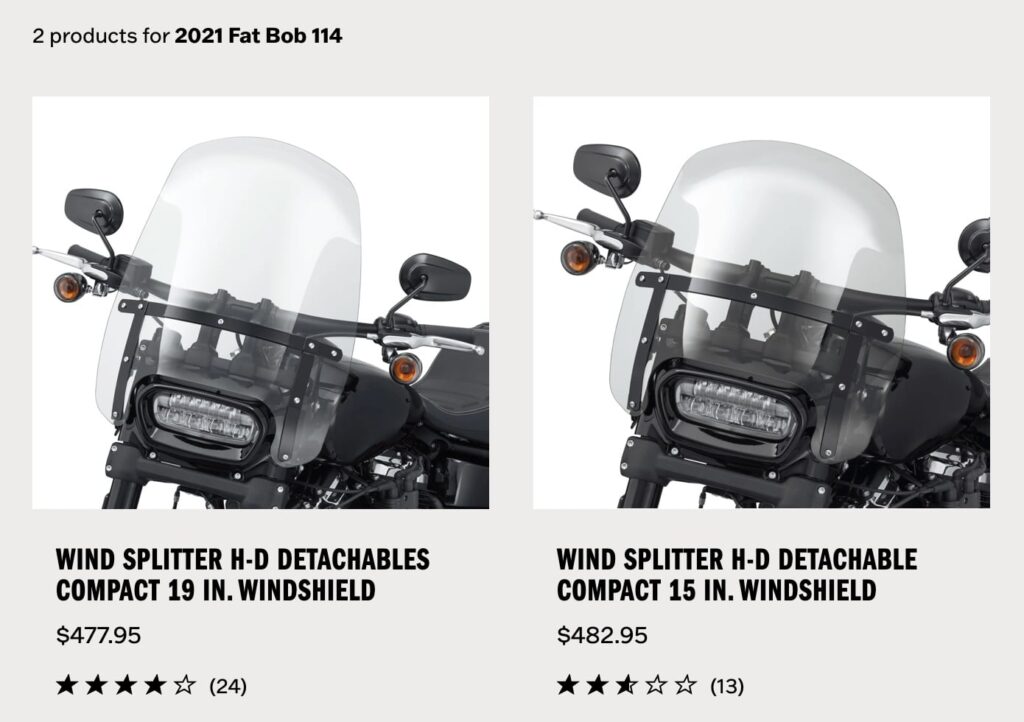
As with all shields, people with different torso heights experience wind protection and buffeting differently, so it’s worth getting these from a local dealer and seeing what works best. (I have a technique I use with cardboard, but it’s best to already have one in place.)
Finally, the tire size and weight led to some unpredictable behaviour when going over bumps. The very everyday task of navigating to the front of a red light would make me feel nervous — going over reflectors on the road, particularly in the wet, was always a little weird. It might just take more time to get used to, though.
Competitors to the Fat Bob
It’s interesting just how little direct competition the Fat Bob has. In fact, I don’t think any other manufacturer is making anything quite like it.
But if you’re looking for a sporty cruiser, you might at least be thinking of the Indian Scout Bobber.
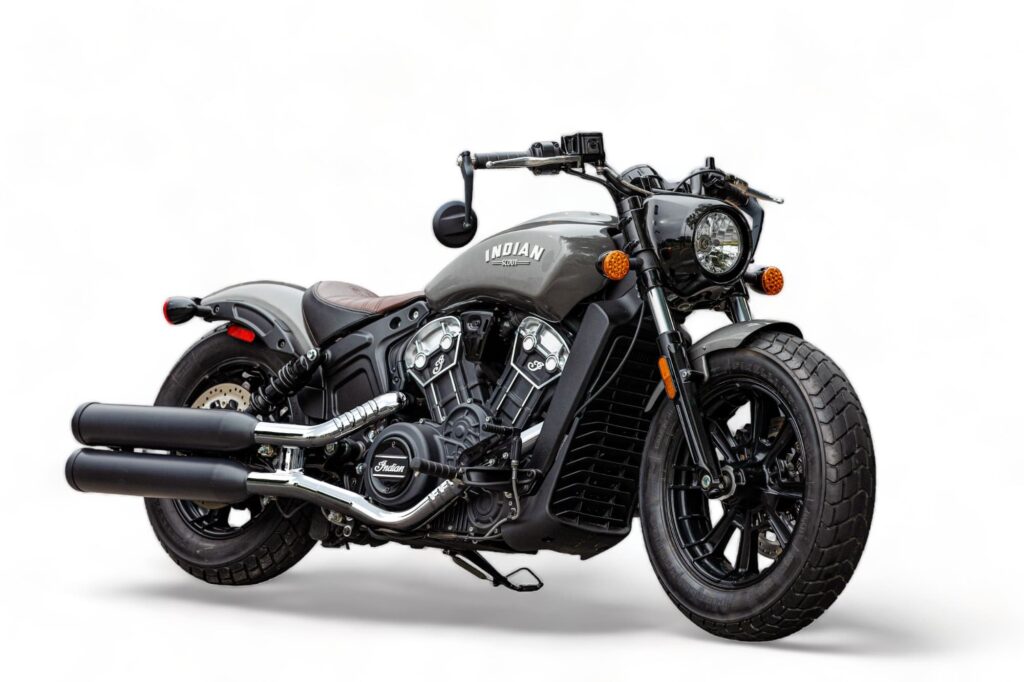
The Indian Scout Bobber seems to be Indian’s most popular format of its Scout motorcycle. At least, it’s the one I most often see referenced. The Scout Bobber (and other Indian Scout variants, other than the sixty) is a middleweight cruiser based on a 69 cubic inch (1,133 cc) liquid-cooled V-twin.
The Scout is an imperfect competitor. Its engine is more powerful but has less overall torque (though it’s by no means lacking). You do have to service the valves on a schedule with the Scout, in contrast with the hydraulic lifter-equipped engine in the Fat Bob.
The Scout is a lot lighter (242 kg in running order, vs 308 kg for the Fat Bob), which in imperial units means it’s nearly 150 lb lighter.
And the Scout has a conventional fork and single disc brake, in contrast with the inverted forks and dual discs of the Fat Bob.
But the end result is not that different. They both have awesome engines and are fun to ride around doing everyday things. The fact that the Scout Bobber is a lot cheaper while still great-sounding and engaging emotionally is a selling point for many.
To me, the Indian Scout Bobber felt wilder. It has a more raucous engine that revs higher. The lighter weight is easier to manage. But it’s just a little less traditional… the reborn Indian brand is quite new, and the Scout has a liquid-cooled engine.
Another imperfect comparison is the Harley-Davidson Sportster S.
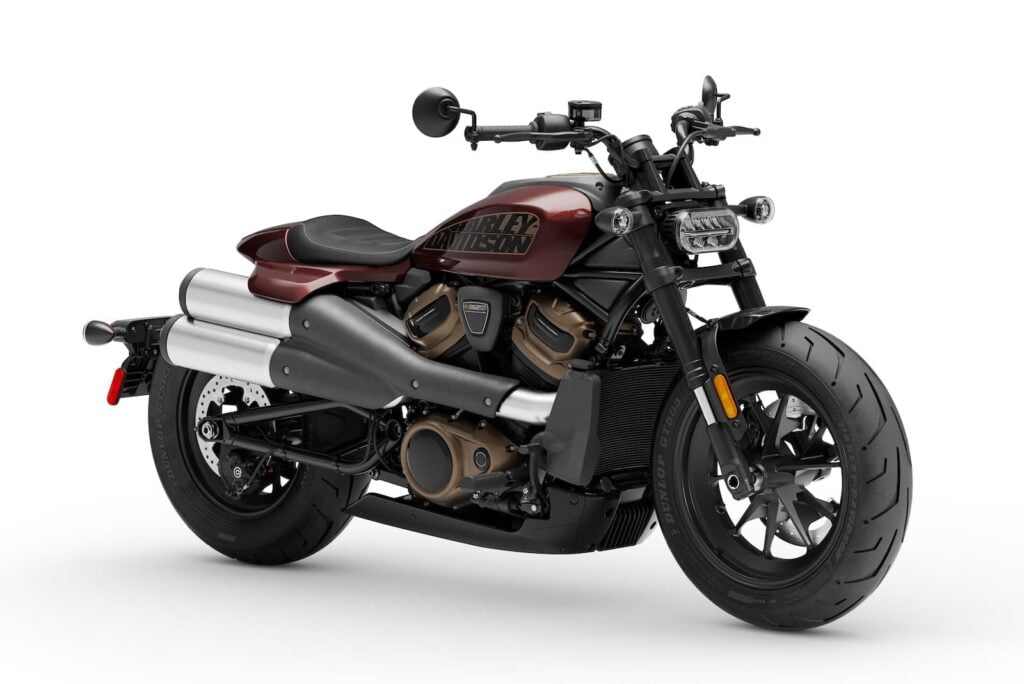
I mention the Sportster S only because you’ll see it in the showroom next to the Fat Bob, and they even share some design elements (like those high-slung pipes). But the ride experience is so different!
The riding position of the Sportster S is less comfortable. The seat is very thin, and you feel like you’re “on” the bike, rather than “in” it. Feet are positioned more forward as a result.
The engine is also very different. The 1250 cc liquid-cooled “Revolution Max” motor is higher-revving and more powerful, which means the bike pushes you to be much more aggressive. This is helped by the low weight, which gives the bike a much more easy-to-steer feeling than the Fat Bob, despite the fat front tyres that they share.
Finally, the Sportster S is intentionally a much higher-tech experience, with stuff like cornering ABS, a digital display, power modes, and even standard cruise control.
There are other middleweight cruisers on the market too, like the Triumph Bonneville Bobber or the Honda Rebel 1100, but they’re straying further away with their parallel twin engines (though they have a V-twin-like 270-degree crankshaft). They’re worthy bikes, but it’s just interesting to note that there are no other big somewhat sporty air/oil-cooled V-twins.
There’s also the BMW R 18, which in pure or classic forms might be an alternative.
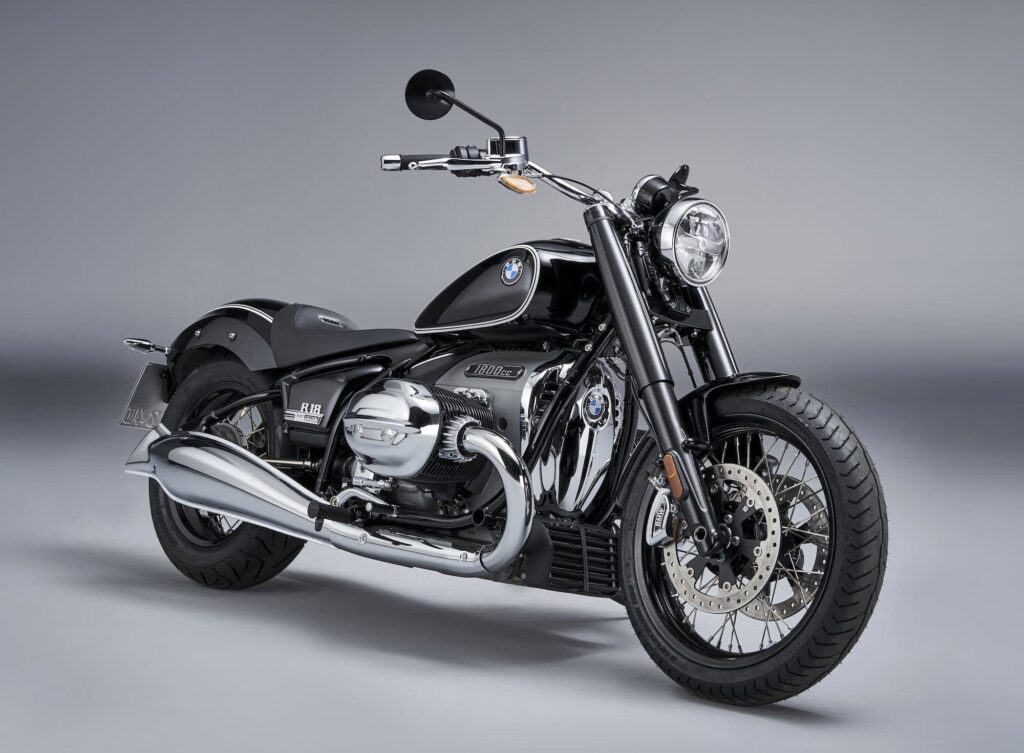
The R 18 is BMW’s attempt at taking a slice of the big cruiser market, plus expanding it in places where BMW has a niche.
Like the R nineT, the BMW R 18 is a “heritage” motorcycle, intentionally using older technology like air cooling and pushrod-driven valves.
But unlike the R nineT, the BMW R 18 has a purpose-built engine. The whole R 18 series (from naked cruisers to fully-equipped transcontinental tourers) is based on an 1,832 cc boxer twin — the biggest boxer ever on a motorcycle.
The whole R 18 is very easy on the eye. It’s long and low. Like Harley-Davidson cruisers, it’s big on torque but not so high on peak power. It’s also quite low maintenance, with a shaft final drive and screw-and-locknut valve adjusters.
The main caveat is the cylinder heads annoy some riders who want to have their feet further out. But it’s not uncomfortable by any means.
Wrap Up
I have to admit that I expected the Fat Bob to be all show and not much go. I know it looked pretty in the showroom, but I expected to ride it and figure out that no, I needed something entirely different.
I was wrong. Even though I didn’t jibe with it right away, after a few days the Fat Bob started to give me this feeling of satisfaction that started to expand into more and more of my riding. I want to grow that feeling more. I’d like to have that level of riding enjoyment all the time! How to get there, I’m not sure; it would mean becoming a lot more accustomed to throwing the weight of “Obese Robert” around. A track day, maybe? I’d like to, and have seen Harleys out there, but again, dropping this thing would be costly…
Two things I learned, anyway, are that a) I think that the Fat Bob would suit more people than I previously guessed, and b) it unfortunately takes a few days for non-Harley riders like me to figure it out. I’ve seen online reviewers dismiss Harleys after 1-hour test rides. I don’t think it works like that. Yes, I’ve fallen for bikes within ten minutes (like the Hayabusa… it took just one ride through the tunnel!), but while this took longer, I eventually started to feel like I “got it”.
That’s why I’d suggest that anyone curious about a Fat Bob try to get their hands on one for at least a few days, maybe by renting one through Eagle Rider or Riders Share or the like. Even from a big rental agency, it’ll cost you around $1,000 for a multi-day trip. At the end of it, worst case, you’ll have had an enjoyable ride and decided to not wear potentially much more than that cost in buying and selling.
Regardless, I really enjoyed my time on the Fat Bob. It’s not perfect, but no bike is. And unlike many more modern ones, it’s not trying to be. It’s the right balance of disparate elements for some, and if you’re at all curious, I’d encourage you to try it out.

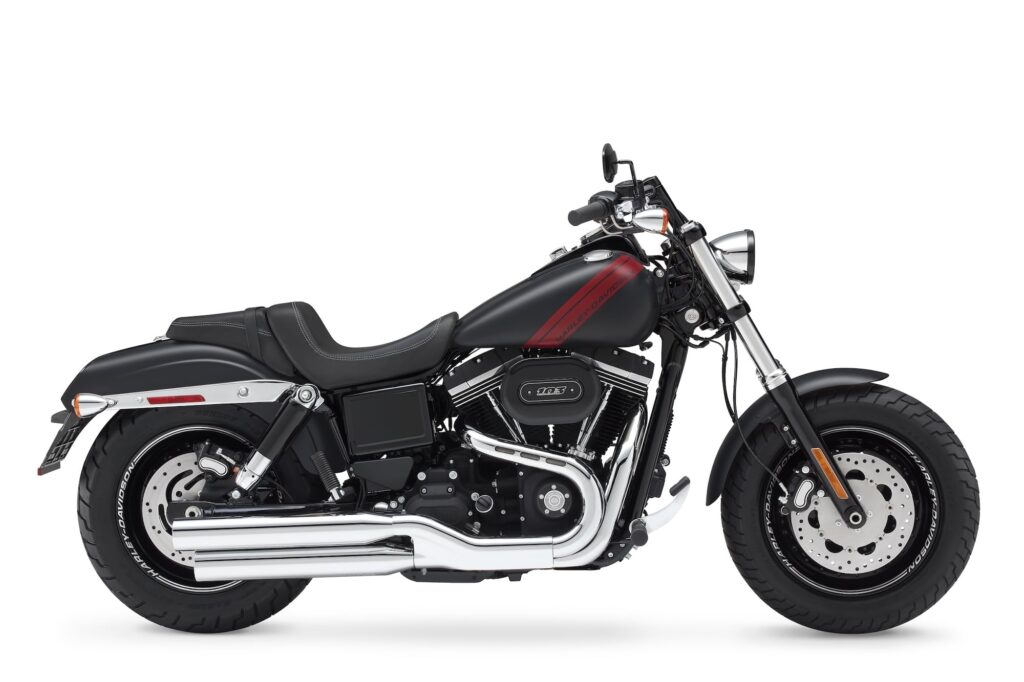
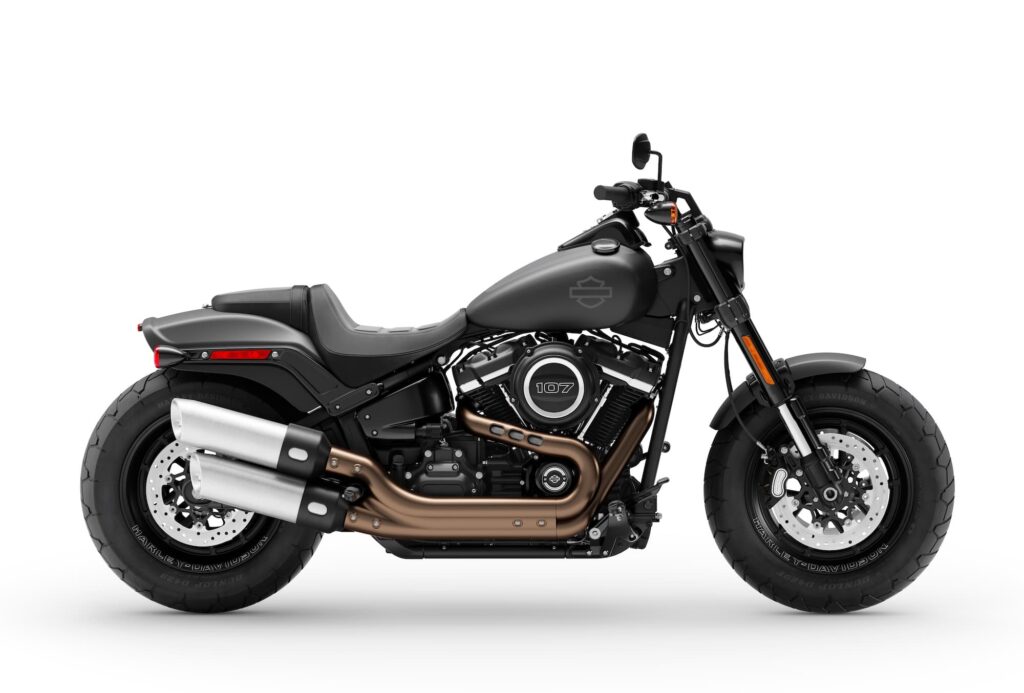
![Triumph Electric Motorcycle TE-1 Prototype — Final Results [Updated] 17 Triumph Electric Motorcycle TE-1 Prototype — Final Results [Updated]](https://motofomo.com/wp-content/uploads/2022/02/Triumph-TE-1-Electric-Motorcycle-Prototype-rhs-side-view-768x512.jpg)
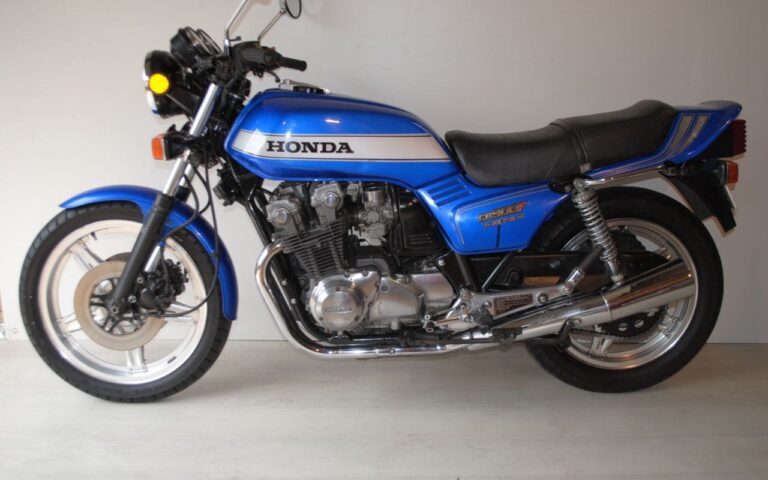
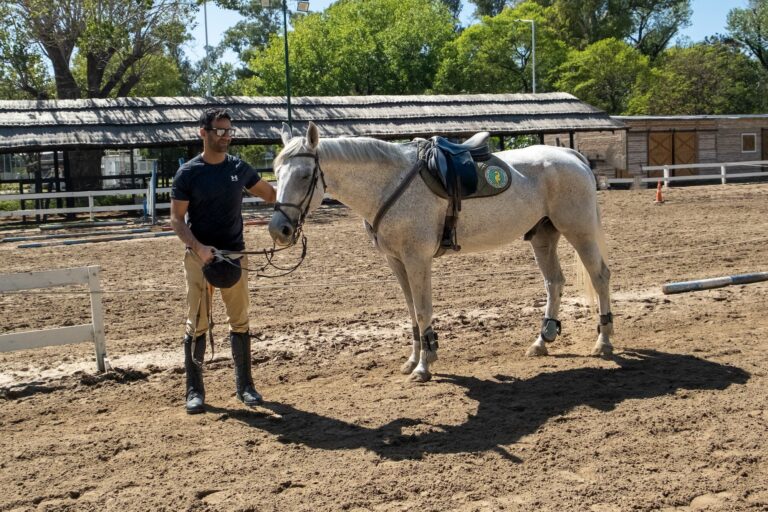
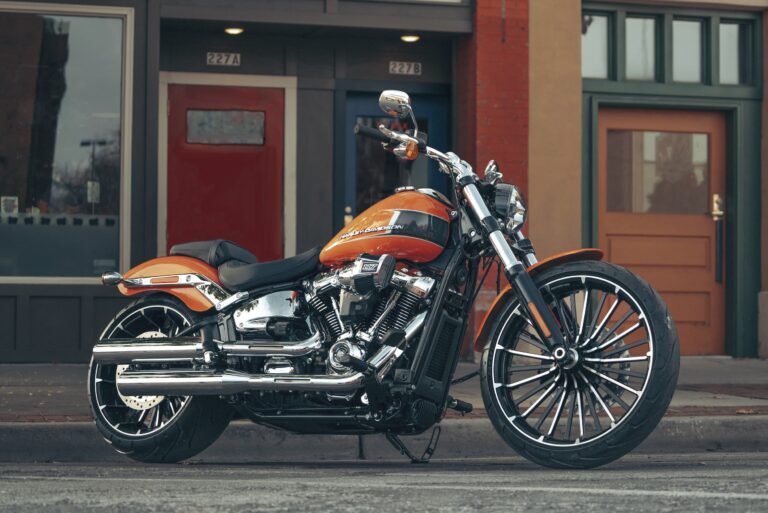
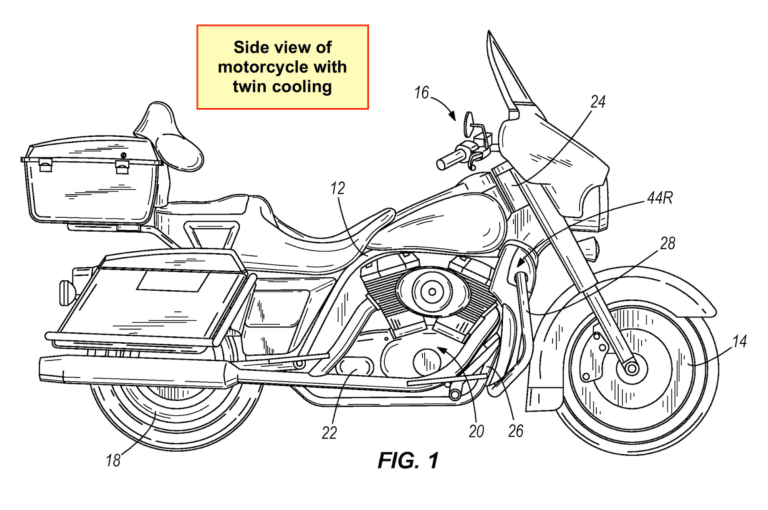
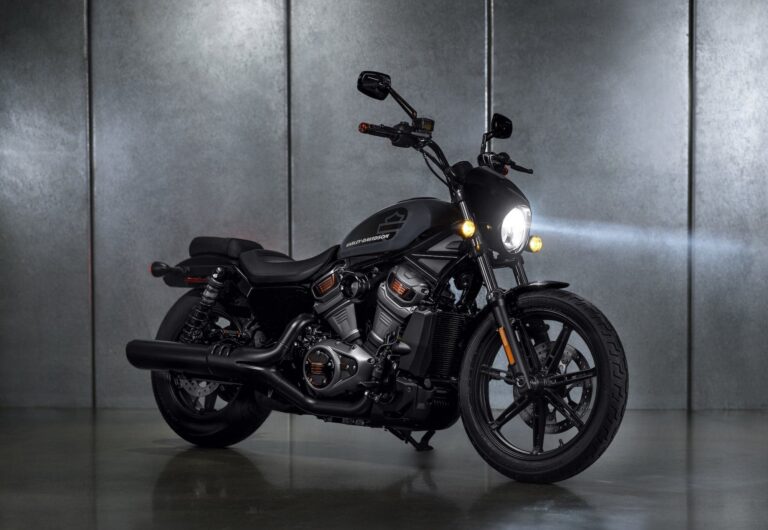
A good contender for the Fat Bob would be the Guzzi 1.4 Audace. Apart from HD’s mystique, which is fading, it’s a rare bike in the same category with high-quality components. It wasn’t a success, but in many aspects, it would surpass its competitors. I’m tempted!
So you tried a Harley. Good for you.
This is my experience. Last year, on an impulse I bought a used Electra Glide with a twin cam engine which was beefed up to 124 inches. Now I am coming from a sporting world where I have an old Fire Blade a ZZR 1400 and I mostly drove Japanese in line fours of different sizes and types.
But I wasn’t ready for the culture shock that I received while driving that big twin. At first I hated it! Too heavy to normally manoeuvre, too hot on summer days. It will cook your inner thigh and below 2k rpm it twitches and jitters constantly. So slow speed manoeuvring is a nightmare and for a bike this big that is an issue. But on a nice curvy road it will shock you just how capable it is to hold a decent line at surprisingly high speed. (For a big bus what it is!). Perfectly balanced and in good condition (Tyres and suspension need to be in good order to avoid Harley shuffle) she can be driven very spirited with decent lean angles. I still have it and when I want something with (I hate this word but it perfectly explains my point) character she delivers every time. Torque delivery just puts a big smile on my face. But as a single bike in the garage I am still not sold on the Harley.
Yeah! This wasn’t the first Harley I tried by the way, but it was the first “big twin” (so in many ways, yes, the first “real” one).
I’ve seen how US police can make a mockery of most riders on big Road Kings — they’re masters at low-speed manoeuvring. They’re very comfortable doing things like counter-balancing to get maximum lean at low speeds and all those shenanigans. It’s stuff I can do on a little bike, but I’d have to get a re-education to learn how to ride like that on a big one.
“Sporty” with respect to riding motorcycles on public roads simply refers to the riding position the bike puts you in. It doesn’t mean racing around corners at hyperspeed
The sport is in all motorcycles challenging cars, trucks and gravel without killing oneself and breathing the fresh air on a nice ride.
Riding a literbike on public roads is not more or less sporty than riding a Harley. You are just in a different riding position.
Hi Dana, what an awesome report you put together! I currently own a 2022 Harley Davidson Heritage Classic 114, and it is a pure joy to ride. I’m looking forward to your future road tests!
I will say that the H-D Fat Bob 114 is the best looking bike in their whole lineup. It has a sporty brutish look and I love the fat tires. It is quite expensive at around $20,000, but it’s a Harley. Being a naked sportbike guy, this model would be the only viable H-D that could possibly work for me. Only modification needed would be mid-mount foot controls. Problem is Harley doesn’t offer that as a factory option when building one. The Fat Bob does look cool with loads of black and lack of chrome. Another thing which makes it stand out from other Harleys is the fat drag bar, which contributes to its overall muscular image. I’d like to test ride one for the true experience. Nice review Dana!
It’s really a great bike. I have my eye on used ones. I look forward to your thoughts once you try it out.